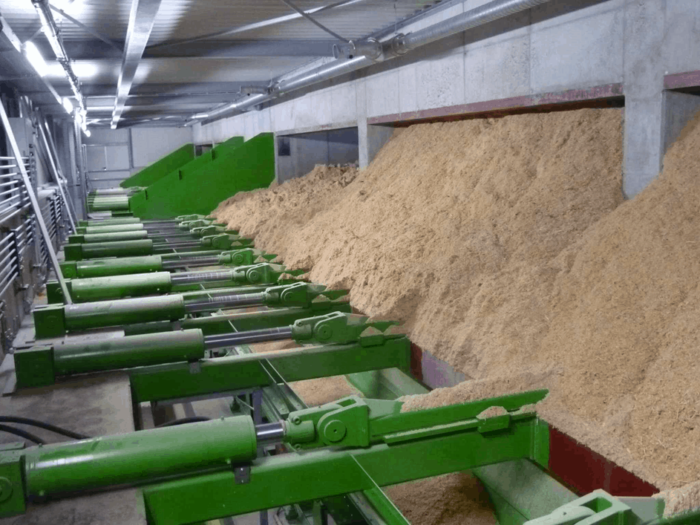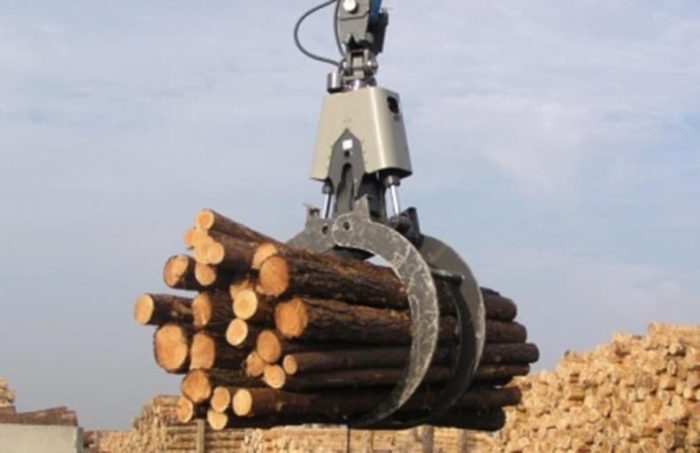What does “green” energy mean?
Green is always associated with a positive feeling coming out of our evolution of using plants for our living since millions of years. As the color itself gives our soul a relaxing input as found in different psychological studies, we use green to describe that something is in a positive way infecting our way of life. But green energy is more than only based on green plants.
It is also the description of every energy source which can be used in a sustainable and renewable way without harming our planet. The godfather of all green energy is probably the forest and the use of wood. During our evolution we use wood as our first energy source and therefore we still have a very positive relationship to burning wood on our fireplace or in our stove in our living room. This positive feeling is still the basis of putting the name green energy two different renewable and sustainable energies we are using. Also, energy that is not “green” when we talk about the color can be green energy because it is positive renewable and sustainable energy. As an example of other “green” energies we can name wind, solar, geothermal, or hydro energy as green energy also. Biomass has been the base to give a name to sustainable and renewable energy. Biomass has been the first sustainable original energy source.
What is green energy?
Talking about the original green energy we are only talking about energy coming from biomass. Bioenergy or biomass energy is every plant which can be used to produce energy out of. It starts with woody biomass, but it is also energy crops from agriculture areas or the residues from processing those. The following photos show a few example of energy crops beside woody biomass.

from agriculture land use The varieties used as biomass energy starts from residues coming from the agriculture production straw from weed or other grain for example. Dedicated biomass energy plants are also produced already, Rape or Corn as two examples.
Maize or other wet (70-75% water content) and fresh biomass is often stored as silage and used for biogas plants. Hemp and China Grass or other fast-growing crops like Maralfalfa Grass are also used to produce pellets for energy use. Woody biomass is the eldest renewable energy source, and it is used in different ways and different varieties of trees are used. Residues from the forest, smaller trees from thinning, plantation wood, trees from land conversions, trees from old fruit plantations, logs from the logging industry collected from different land use system. Other trees and locks sources from any kind of land use. The varieties of trees which can be used is huge. It starts from soft wood to hardwood and goes from pine trees over spruce to beach and oak. In some parts of the world plantation wood from the southern yellow pine, radiata pine, or different varieties of gum trees are used.

What is the use of green energy?
While energy or biomass energy is often used to be burned in a fireplace or in a stove for the direct production of heat, at industrial dimensions we also see that a huge amount of biomass is used to produce process heat for production or drying processes. In the following picture 3 we describe in general how our CHP combined heat and power plant will work . First of all the raw material wood chips or rigid residues from wood processing will be delivered to the site.
It is handled and stored on automatic dozing system and will be dosed to the furnace. In the furnace the wood turns into hot flue gases and those flue gases will heat up the transportation medium mostly water or at some systems synthetic oil. This hot steam will run to a turbine and the turbine will turn a generator. The electricity production is the 1st result of turning bioenergy into transportable electricity. After the steam turns the turbine it heats condenser and run back to the boiler to be heated up again. The energy from the condensing process is used as heat. This heat can run a dryer or operate a process which needs heat for any kind of production. The flue gases which are now colder (around 150 degrees Celsius) will be cleaned in a filter (sometimes cyclone and an ESP (electrostatic precipitator)). To get to a higher level of clean flue gases it is also possible to install the backhouse filter or even an activated carbon filter when burning dirty wood or wood which was already used in products and is now waste from the first round of use. There are much more uses for solid biomasses from renewable sources and therefore we have a huge variety of compassion systems, bolar systems and turbine systems with the combination of different heat exchanger energy recovery systems and flue gas cleaning systems.
What are the types of green energy?
As described before, the result of using the biomass gives us an energy which is on the same efficiency level we learned from the century of burning nonrenewable fuels.
Highly efficient technology gives us the capability to use biomass in a much more sustainable and efficient way than we did before the industrial revolution. Besides the classic biomass and bioenergy energy use in a direct way, producing heat and electricity, there are also products from biomass energy which are turned into a fuel, liquid or solid to be able to fuel existing energy systems which were based on nonrenewable fuels in the past. Biomass is also used to produce higher level of advanced biofuel out of. This advanced biofuel can be ethanol for example. America is a major producer for ethanol. They reduce the CO2 impact on gasoline buy doing this. In Europe ethanol is also used in gasoline and sold to us as E 10 at your gas station. The ethanol production is based on corn or weed and is often not supported from the NGO’s (Non-Government Organization) as there is a competition between food production and energy production in these agriculture areas. Also, the biogas production was implemented, for example in Germany, to support farmer with a new income and increase the production of electricity from
green energy. Unfortunately, subsidiaries of green energy for agricultural land increased the cost of land use and is therefore not supported from new political decision makers anymore. As a competition of this biomass is still based on a very low-cost production of food, the food production is not able to compete with the energy production subsidies. This balance between the price for food and the price of luxury to have energy, needs to be leveled out to have the right balance for our modern way of life. This modern way of life needs also to include the necessity to feed all human and support a modern way of life for everyone. Besides the advanced biofuel from agricultural land, there is also advanced biofuel from wood. This biofuel is used in existing energy conversion systems, like power plants from the electricity producer, and needs to have the same properties as coal has. There are two different general process technologies which can be named and divide it:
- torrefaction technology
- steam exploded technology
The final product from these technology looks pretty much the same from the outside. But the torrefaction technology gives more black and dark pellets as a product. The steam exploded technology produces mostly dark brown pellet with very interesting behaviors. To replace coal in a coal fired power plant the following characteristics needs to be fulfilled:
1. Grindability
The technology of handling the new fuel needs to be able to also handle the existing fuel (coal) in parallel. This is needed as the most plants are not converted 100% to a dedicated biomass plant. This means they are also using coal and do use biomass as co- firing. This means that the product needs to be in the same physical dimension as coal. As the most power plants are using coal dust to be blown in the furnace the maximum diameter of any particle burnt with coal needs to be smaller than 1 millimeter. The cool will be milled in existing coal mills and the new fuel must have the same grindability to be milled to the same size.
Grindability is a characteristic which must be fulfilled.
2. Water resistance
At coal power plants the fuel is very often stored outside. Weather conditions outside can be very wet during certain time of the year. Therefore, it is necessary to also have the new product (torrefied or steam exploded pellet) stored outside to use the same area and technology. A normal white pellet will turn into wet sawdust when it has contact to water. Therefore, the treatment of torrefying or steam exploding needs to end in a product which is hydrophobic and is therefore capable to store also in wet areas.
Water resistance is a characteristic which must be fulfilled.
3. Transport density
Energy transport around the world comes with a cost. Therefore, it is needed that the energy content of any cubic meter which is transported needs to be as high as possible. As black cool is a high-density product with an energy content of around 30MJ/kg at 830g/l (dry), a cubic meter contains 25GJ. White wood pellet has around 18.5MJ/kg at 600g/l (dry), a cubic meter contains 12GJ. With torrefied pellets or with steam exploded pellets this can be increased significantly.
Energy density of Biomass for Transport is a characteristic which must be as high as possible.
4. Cost efficiency
Energy conversion comes with the cost; this means that the energy producer needs to find the cheapest energy source to produce their product electricity as cheap as possible. Climate change forced the politicians to set circumstances where the electricity producer needs to fulfill the reduction of CO2 emission from nonrenewable energy sources. To use solid sustainable and renewable fuel in a coal fired power plant, the energy producer can convert the technology of grinding and storing to the white pellet energy source like DRAX (biggest English energy producer) did in the past. Doing so, a huge investment of storage and handling equipment is needed. Using advanced biofuel as torrefaction or steam exploded pellets means that there is no investment in technology needed before using renewable fuels as a co-firing or as dedicated biomass. The energy price itself is then the only cost comparison when buying the fuel. The price of biomass feed it in the energy plant is limited to the fee any energy producer needs to pay if not burning the required amount of CO2 neutral energy.
Cost efficiency is a characteristic which must be compatible with the circumstance of using.
The full described minimum requirements on advanced biofuel needs to be fulfilled before the next generation of biofuel will meet all circumstances. Until now steam exploded pellets meet all the requirements in the above description and are also already used in huge power plants for coal firing and as dedicated biomass fuel. We see that this technology will have a great future and we had the luxury of already helping the market leader to install his first industrial size steam exploded pellet production. We hope also that this success will continue.
Conclusion
Biomass is everywhere! Look outside and get an idea of using it for a special product or energy source to the existing circle of CO2 and lower the pressure on our climate! Talking about efficiency will be the key player of finding the best home for the high-quality industrial pellets and biomass in total for all uses. All renewable energy sources will need to find best efficient use to be used is a long run. Explaining all this to you gives you a small overview about the key points of using bioenergy and explained hopefully the advantages of bioenergy and biomass energy to all human being. In the future it is more than important that not only the production of renewable energy, like wind and solar will increase, we also need to implement in our energy system an easy storable renewable energy like biomass. We are your partner to gain this target. Let’s do it together!
